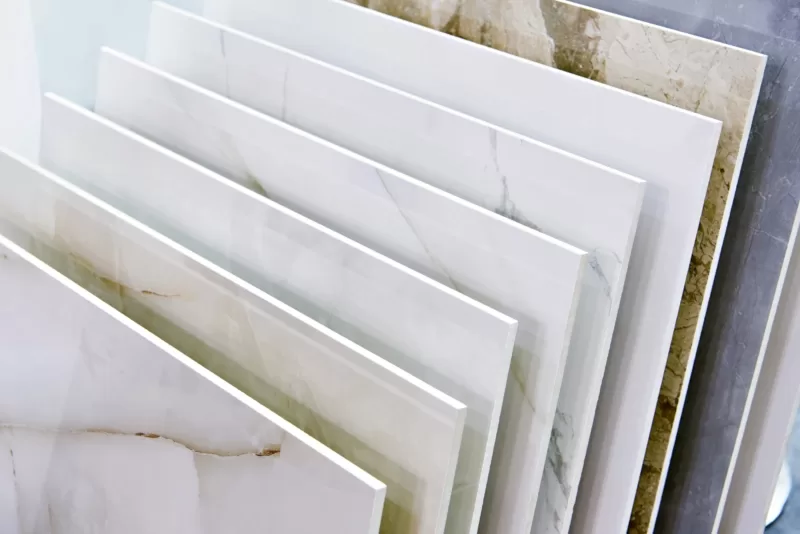Porcelain is no longer just for fine dinnerware. In recent years, it’s made a stylish and highly functional entrance into kitchens as a countertop surface, especially among architects and designers seeking durability without sacrificing beauty. But is it the right material for every remodel?
Here’s what to consider
Remodeling a kitchen can be an exciting time, when it comes to exploring all the options for cabinets, work islands, and countertops available today. If you live in Marin County, there are several showrooms where you can walk in and get a real feel for the variety of materials available. Because of its versatility of style options, porcelain is a popular choice. Let’s look at the benefits and drawbacks of this material. Examining the pros and cons of porcelain can help you decide if it is the right option for you and your family.
Pros of Porcelain Countertops
Exceptional Durability
- Porcelain is fired at extremely high temperatures, which makes it incredibly dense and strong
- It ranks at the top when it comes to resisting scratches, abrasions and chips – even higher than many natural stones, including quartz.
Heat Resistance
- You can place hot pots and pans directly on porcelain without fear of scorching.
- It’s great for serious cooks or those who just dabble and skip the trivet.
UV Resistance
- Porcelain won’t fade or yellow in sunlight, unlike some engineered surfaces.
- If your kitchen has skylights, or you install porcelain for use with outdoor appliances, UV resistance is a significant advantage.
Stain Resistance
- Porcelain’s dense, hard finish means it’s non-porous, so it won’t absorb liquids or oils.
- Spill or drip red wine, tomato sauce, or turmeric? No problem – wipe it clean.
Hygienic and Low Maintenance
- Porcelain offers natural resistance to bacteria, mildew and mold.
- Unlike granite and marble, there is no sealing required.
Versatile Aesthetic
- If you want your porcelain to appear to be something other than porcelain, the available range of patterns in large-format slabs can sport designs that mimic anything from marble to concrete to granite or even wood.
- Clean lines and seamless waterfall edges are ideal for modern and minimalist kitchens.
Lightweight
- This material is easier to install on walls and thinner cabinetry.
- It is also suitable for vertical applications like backsplashes or feature walls.
Cons of Porcelain Countertops
Edge Chipping and Surface Issues
- While the surface is hard, edges can be vulnerable to chipping, especially on mitered corners. For high-traffic kitchens, request rounded or reinforced-edge profiles.
- According to some buyers, the porcelain surface can sustain scratches and cracks. No surface is foolproof, and each material has its weaknesses.
Limited Thickness Options
- Most slabs are 6–12mm thick, much thinner than quartz or granite.
- Porcelain can be laminated for a thicker look, but that adds labor and increases the cost.
Installation Requires Precision
- Cutting porcelain requires diamond tools and skilled fabricators.
- Fewer fabricators are experienced in working with porcelain compared to granite or quartz.
Cost Variability
- While porcelain can be less expensive than high-end natural stone, fabrication costs can offset material savings.
- Imported slabs or custom patterns can raise the price.
Limited Availability (in some markets)
- Not all slab yards stock a wide range of porcelain options.
- Lead times and sourcing may be longer than for more common materials.
Porcelain countertops are ideal for:
- Clients seeking a modern, low-maintenance surface
- Projects where heat and UV resistance matter (e.g., outdoor kitchens)
- Designs requiring thin, sleek profiles or large seamless slabs
They may not be ideal for:
- Traditional kitchen designs with ornate edge detailing
- Clients who are hard on surfaces and prefer thick, forgiving materials like granite
If you are considering a kitchen remodel and you’d like to explore your design and material options, book a consultation today. We’d love to share our insights about your design options.


